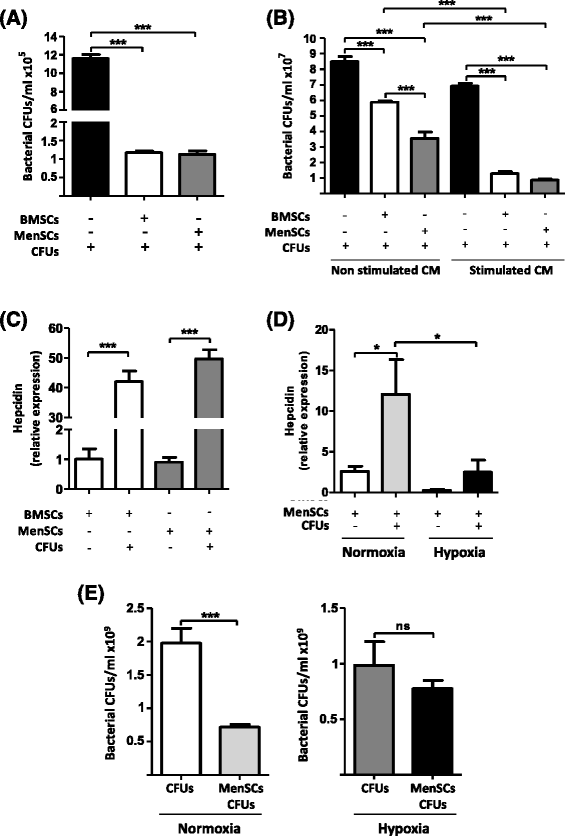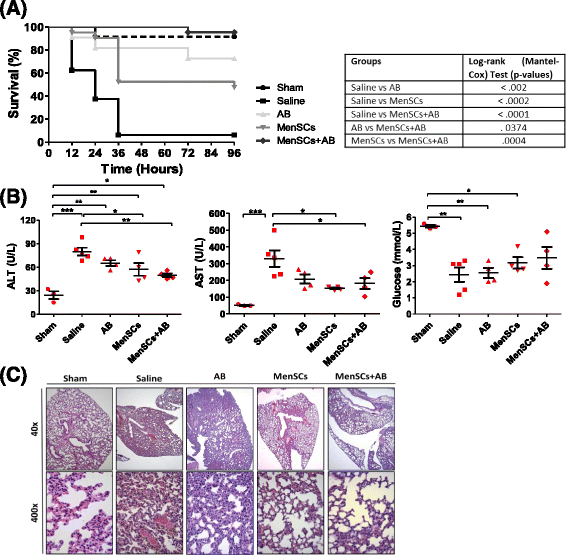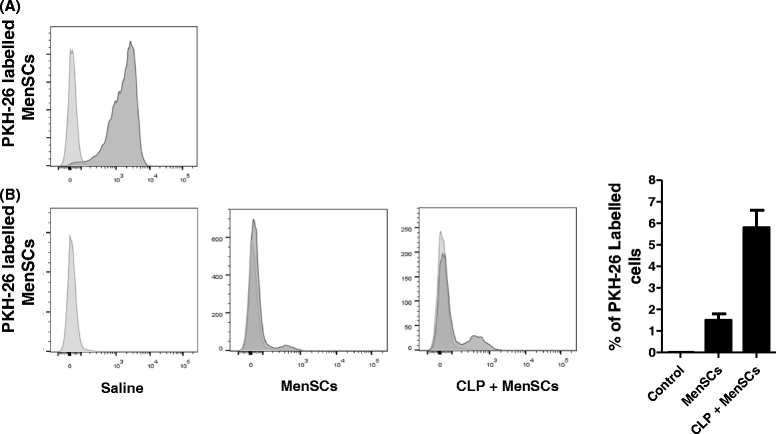Combination therapy of menstrual derived mesenchymal stem cells and antibiotics ameliorates survival in sepsis
- PMID: 26474552
- PMCID: PMC4609164
- DOI: 10.1186/s13287-015-0192-0
Combination therapy of menstrual derived mesenchymal stem cells and antibiotics ameliorates survival in sepsis
Abstract
Introduction: Sepsis is a clinical syndrome associated with a severe systemic inflammation induced by infection. Although different anti-microbial drugs have been used as treatments, morbidity and mortality rates remain high. Mesenchymal stem cells (MSCs) derived from the bone marrow have demonstrated a partial protective effect in sepsis. Menstrual derived MSCs (MenSCs) emerge as an attractive candidate because they present important advantages over other sources, including improved proliferation rates and paracrine response under specific stress conditions. Here, we evaluate their therapeutic effect in a polymicrobial severe sepsis model.
Methods: The antimicrobial activity of MenSCs was determined in vitro through direct and indirect bacterial growth assays and the measurement of the expression levels of different antimicrobial peptides (AMPs) by quantitative reverse transcription-polymerase chain reaction. The therapeutic effect of MenSCs was determined in the cecal ligation and puncture (CLP) mouse model. Mice were then treated with antibiotics (AB) or MenSCs alone or in combination. The survival rates and histological and biochemical parameters were evaluated, and the systemic levels of pro- and anti-inflammatory cytokines as well as the response of specific lymphocyte subsets were determined by flow cytometry.
Results: MenSCs exerted an important antimicrobial effect in vitro, mediated by a higher expression of the AMP-hepcidin. In the CLP mouse model, MenSCs in synergy with AB (a) improved the survival rate (95 %) in comparison with saline (6 %), AB (73 %), and MenSCs alone (48 %) groups; (b) enhanced bacterial clearance in the peritoneal fluids and blood; (c) reduced organ injuries evaluated by lower concentrations of the liver enzymes alanine aminotransferase and aspartate aminotransferase; and (d) modulated the inflammatory response through reduction of pro- and anti-inflammatory cytokines without significant loss of T and B lymphocytes.
Conclusions: We conclude that MenSCs in combination with AB enhance survival in CLP-induced sepsis by acting on multiples targets. MenSCs thus constitute a feasible approach for the future clinical treatment of sepsis.
Figures







References
Publication types
MeSH terms
Substances
LinkOut - more resources
Full Text Sources
Other Literature Sources
Medical
Miscellaneous

